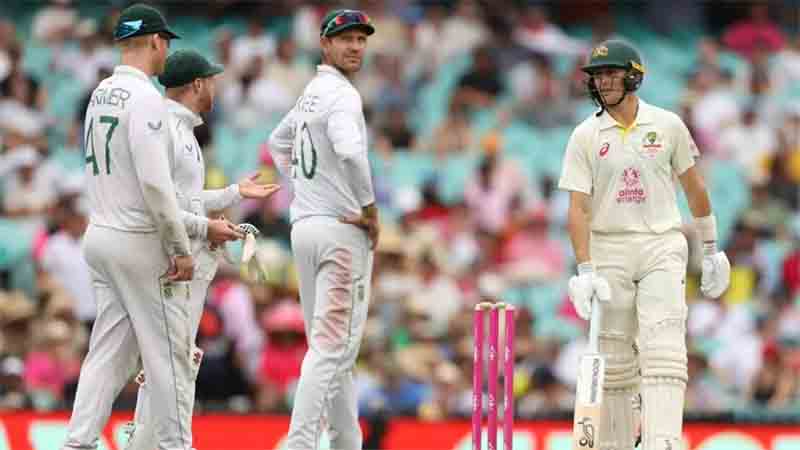South Africa was confident that Simon Harmer had taken a clean catch from Marnus Labuschagne in the slips, despite the third umpire ruling it not out. But they could at least rest a bit better knowing that it had not been too expensive because of Anrich Nortje’s tenacity.
When Labuschagne reached 70, he edged Marco Jansen low to Harmer at slip, who promptly took the catch. Labuschagne, though, resisted and the decision was made upstairs. The television umpire, Richard Kettleborough, decided it hadn’t gone in cleanly after considerable rocking, rolling, and zooming.
We all believed it was out, Nortje remarked. “Simon felt certain it was honest. We believe that if you look at it from the front, the fingers appear to be below it. Unfortunately, we missed out on that opportunity. At the time, I believe it would have been significant. We have no doubt that it was out.”
Despite believing that the replays proved the ball had to have touched the ground in some way, Labuschagne was unable to capitalise on the reprieve, edging a rising delivery from Nortje for what turned out to be the final ball of the day.
No matter if it was caught or not, Labuschagne said, “with the technology, there are so many ones that people are adamant they have caught – and Simon said “I’ve caught that” – and in the old rules of catching it, because you felt like your fingers are under it, absolutely, but with the new footage those are so scrutinised because you see so many angles.
The front-on view really looks rather fine, but the side-on angle makes it appear especially terrible. “The rules of the game state that if there is no TV, I must walk. Although technically portion of the ball is contacting the grass whether or not his fingers are under it, the amount of slow-motion footage of the ball allows you to watch his fingers push and split wide.”
Additionally, he agreed with the decision to essentially eliminate the on-field soft signal, which in this instance was an out. It is no longer a decision that the third umpire must discover convincing evidence to overturn; instead, it simply enters the game if the TV replay fails or is not available.
The soft signal on-field is no longer important, as it once was, according to Labuschagne. “If the umpire called it, he would need convincing evidence to reverse it, but because Kets (Kettleborough) was in the hot seat, there was no need for him to be influenced.
It’s difficult to know whether you are at square leg whether that is carried or not, therefore that is the best method to go about it. The gentle signal used to carry so much weight.” Simon Taufel, a former ICC umpire, explained the change to the soft-signal policy but acknowledged South Africa may feel unfortunate in this case.

